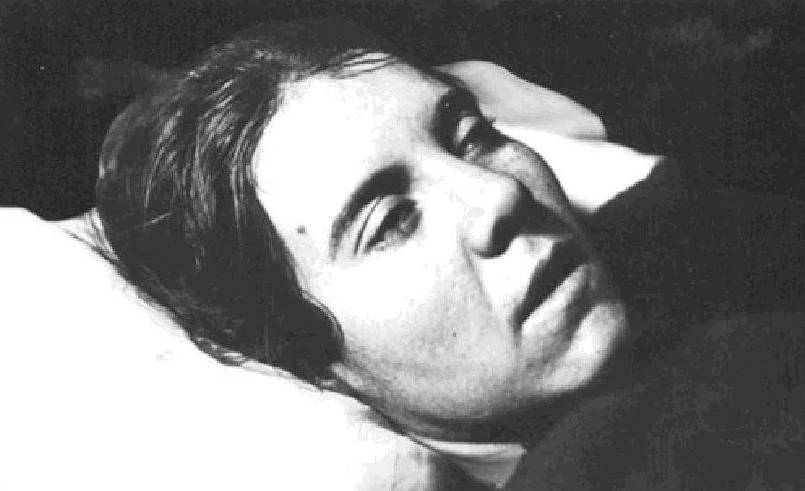The story is about lethargy. Apart from this girl who slept for 20 years, there was one more such case in the USSR - officially documented. There were also a lot of terrible rumors, for example, about the writer Gogol who fell into a lethargic sleep and woke up in the grave and so on.
If it is indeed a fiction about Gogol, as evidenced by his request to bury his remains only if there were signs of decomposition, which was fulfilled, then the cases of Nadezhda Lebedina. What lethargy means - it is not really a dream, but a condition of a person into which he or she can fall for a number of reasons. The main ones are severe stress, nervous exhaustion and it is also a sign (not always, but often) of schizophrenia. The condition at first sight is similar to a normal dream. However, there are two strong differences - there are no signs of life other than severely slowed breathing and also it can last for a very long time - from a few weeks to dozens no.
In order for a person who has fallen into lethargy to sleep his or her term and still live, it is necessary to control his or her vital signs with medication.
Nadezhda lived with her husband and daughter for 5 years in the village of Mogilev, Dnipropetrovsk region. The family was characterized positively, but the spouses sometimes quarreled - who wouldn't? One day after another quarrel, apparently very serious, Nadezhda, being in a state of strong nervous tension, went to bed.
In the morning she simply did not wake up - the woman was breathing, there was a pulse, but no one was able to wake her up. Not her husband, not her daughter's crying, nothing. The woman slept and slept, and lay in one position and did not move. Twenty-four hours passed. The worried man called an ambulance and Nadezhda was taken to hospital.

After some time she was transferred to the psychiatric clinic of the Dnepropetrovsk Medical Institute - according to Tatiana Grekova, candidate of biological sciences and historian of medicine, who described Lebedina's case in her book ‘The Bible and Medicine on Health and Disease’. There, the woman was diagnosed with schizophrenia and left to lie in the clinic under the supervision of doctors.
Of course, the diagnosis sounded strange - a woman just sleeping, what schizophrenia? However, there was a precedent. The physiologist Ivan Pavlov, who studied reflexes, wrote about Kachalkin's case and also pointed out that the man had schizophrenia. I will write about Kachalkin below, but for now let's return to Lebedina.
As described by the scientists who studied Nadezhda's case, the trigger for her condition was a quarrel with her spouse, and there were a number of underlying causes: chronic fatigue, exhaustion of nervous resources, metabolic disorders or encephalitis. Most likely, Lebedina was very tired, kept it to herself for many years, and in the end her nerves couldn't take it.
Lebedina spent the first four years of her sleep in a psychiatric hospital. Then she was moved to her mother's flat, who was trained in what to do. Nadezhda's husband died during this time, and her daughter ended up in an orphanage (it is strange that she was not taken in by the same Nadezhda's mother, the girl's grandmother).
As a result of this case study, Lebedina was also diagnosed with hysteria. Interestingly, it was diagnosed by psychiatrists in the 19th century if they could not understand the reason for what happened to a woman.
The Soviet ‘sleeping tsarevna’ came out of her lethargic sleep 20 years later, in 1974, on the day her mother died. Then Lebedina said that while she was asleep, she heard everything around her, but could not wake up and move. But when they told her that her mother was gone, Nadezhda felt as if something had let go and she woke up. Doctors said that more stress than a fight with her husband was able to bring her out of her state.
Nadezhda's daughter Valentina, already an adult by then, came to continue caring for her mother. She was very surprised to see Nadezhda sitting on the bed where she had been lying for the last 16 years.
When Nadezhda fell asleep, she was 34 years old. During the time she had been in lethargy, the processes of vital activity had slowed down so much that the woman's appearance had not changed. That is, there was all the same state of teeth, hair, skin... And after Lebedina woke up, she immediately aged - in a few weeks she turned into a 54-year-old.
From then on, her life was the same as everyone else's. She underwent a rehabilitation course - she had to learn to walk and eat again. Then everything got better and Lebedina lived for another 20 years. She gave interviews occasionally - her case was almost unique. She said, ‘I'd rather sleep for 20 years than live the way I lived.’ So ‘positive family’ is a relative concept. Nadezhda Lebedina died in 1994, after the collapse of the USSR and the dashing 90s.


















